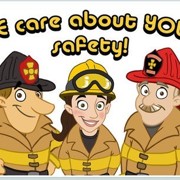
The holidays and gift-giving are still a little less than two months away. November is quickly becoming “Shop-vember,” with major retailers wanting to unload summer-season styles and leftover inventory. Several big box retailers and online sellers are enticing consumers to start holiday shopping early, by offering deep discounts, price matching guarantees and relaxed return policies.
As shoppers head to the malls, or before they buy online, the USFRA and the U.S. Consumer Product Safety Commission (CPSC) is reminding consumers to put safety at the top of their toy shopping list and is urging manufacturers and consumers to be vigilant, especially when it comes to buying children’s toys.
Toy Safety
The majority of toy injuries and deaths are associated with choking on small parts of toys.
Tips for buying toys:
- Choose age-appropriate toys that match the child's interests and abilities. Always read and heed the label to determine whether a toy is age-appropriate for the child.
- Consider the ages of all the children in the household, as toys with small parts, projectiles, sharp edges and other hazards can harm the younger siblings.
- Get safety gear, including helmets, for scooters and other riding toys. Helmets should be worn properly at all times and be sized to fit.
- Keep small balls and toys with small parts away from children younger than age 3, as these are choking hazards. Supervise older children as deaths have occurred with small balls.
- Ensure high-powered magnets and button cell or coin batteries are kept away from young children who might mistakenly, or intentionally, swallow them, as these items pose ingestion hazards.
- Keep balloons away from children younger than 8 years old, especially latex balloons as they can present a choking hazard.
- Take note of safety warnings, information and labels.
- Properly dispose of thin plastic bags and packaging, as children can suffocate.
Before purchasing a new or used toy, be sure the toy has not been banned or recalled. Consumers can check online at www.cpsc.gov/recalls, or by downloading the free CPSC Recalls App at
CPSC.gov/Data. If possible, consumers should register the toy with the company after purchase, so they can receive recall notices directly from the company.
Online Buying Safety
Many consumers prefer the convenience of holiday shopping online. Before hitting the button to place that online order, CPSC recommends following these safety tips:
- Always shop from stores and online retailers you know and trust.
- Check for additional safety information from online sellers, especially when shopping for children. Look for a choking hazard warning or statements, especially when purchasing toys and games online that contain small parts, such as balls, marbles, and balloons.
- Avoid buying counterfeit items by scrutinizing the item, the packaging and the label. If the price seems too good to be true, this can be a sign that the product is not authentic or original, and may be unsafe.
- Look for a certification mark from an independent testing organization and the manufacturer’s label.
If a toy, or any other household product, appears to be dangerous or malfunctions, immediately stop using it, secure it in a safe location away from children, and report the safety issue to www.SaferProducts.gov. This can help reduce the risk of injury to other children.

